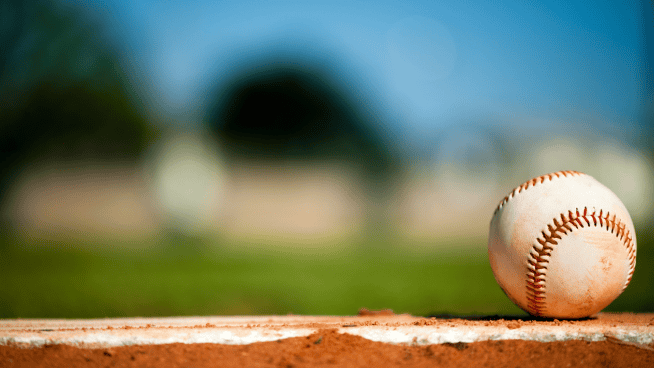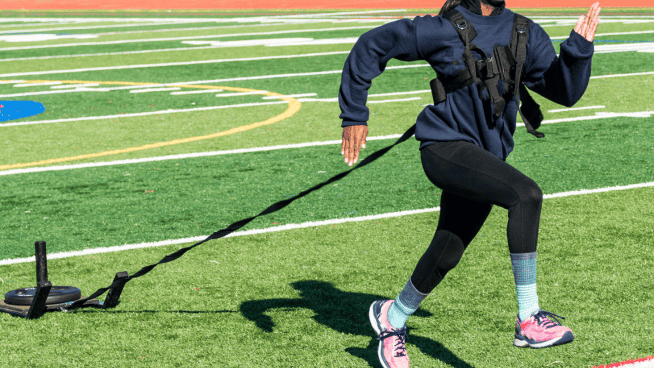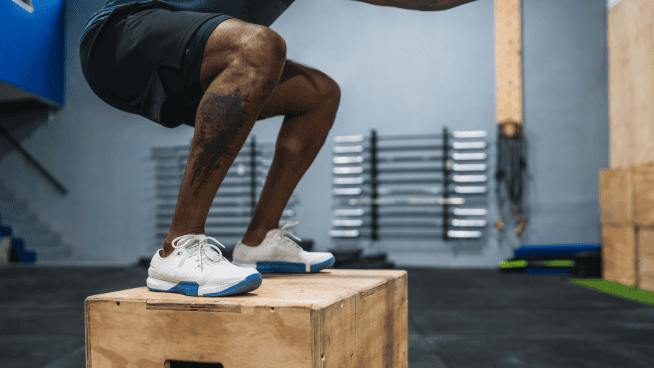3 Worst Core Exercises for Baseball (and What to Do Instead)
The term “core training” is right up there on the list of Most Annoying Fitness Phrases, together with “tone” and “beast mode.” Even more annoying is that people think a strong core means doing thousands of crunches and planking for hours on end.
These exercises may give the average gym-goer the six-pack he craves, but athletes need to consider how the core actually operates on the playing field. And few athletes need core strength more than baseball players.
Core exercises for baseball players need to help transfer force from the legs and arms to the bat or ball. Without a well-conditioned core, baseball players will never generate the power needed to throw or swing at high speeds. Worse, a weak core won’t properly decelerate the muscles that swing and throw, increasing the chance of common injuries like oblique strains and lumbar stress fractures.
We asked three STACK Experts to break down common core exercises that could put baseball players on the fast track to injury, explain why the exercises have no business in a baseball player’s program, and provide alternatives to build a rock solid core.
Check out some baseball core exercises that work.
Bad Choice: Weighted Crunches
The negative effects of spinal flexion (the movement of the lower back during crunches) with added weight have been well documented, and the risk of injury seems to outweigh the benefits.
“Crunches support a lumbar and thoracic flexion-based movement pattern that may not be helpful towards increasing performance for baseball players,” says Miguel Aragoncillo, a strength coach at Endeavor Sports Performance in New Jersey.
Aragoncillo says many baseball players have poor thoracic (upper-back) mobility, and crunches can make the problem worse. Without proper range of motion through the upper back, extra stress is placed on the shoulder, elbow and lower back.
“The player will experience more movement in the path of least resistance—in this case the lumbar spine,” Aragoncillo says. A strong core means less movement at the spine and more movement at the hips.
Better Choice: Medicine Ball Slams
[youtube video=”c-K48xmnHA8″ /]Aragoncillo recommends core exercises that accomplish three things:
- Transfer force from the body to the ball
- Resist motion in multiple planes
- Increase coordination by linking the upper and lower body
Medicine Ball Slams get the job done by applying force quickly while engaging the core muscles to prevent the lower back from flexing or twisting too much.
How to Do It:
- Grab a light medicine ball (6-10 pounds) and stand with your feet directly under your hips.
- Squeeze your glutes and tighten your abs as if someone were going to punch you in the gut.
- Raise your arms overhead and rock up onto your toes, trying to get as tall as possible.
- Forcefully swing your arms down and slam the ball into the floor.
Sets/Reps: 3-6 x 3-8
Bad Choice: Dumbbell Side Bends
Baseball players need strong obliques to swing and throw, so it makes sense to strengthen them with Dumbbell Side Bends, right?
Hold that thought. According to Bill Rom, director of performance at Prospect Sports in New York, players need an exercise that resists this bending motion to build stability through the core.
RELATED: Improve Your Hitting and Throwing Power With Baseball-Specific Core Exercises
Better Choice: Suitcase Iso Holds
[youtube video=”Xz3cB5caNwU” /]“Dumbbell Side Bends are a good idea, but bad physiology,” Rom says. “To hit the same muscle groups, but have a greater impact on strength and performance, try a Suitcase Iso Hold.”
How to Do It:
- Assume a proper deadlift stance holding dumbbell in one hand at your side.
- Drive your heels through the floor to stand up, keeping the dumbbell at your side with your arm straight.
- Keep your core tight as if someone were going to punch you in the gut.
- Hold this position for the prescribed amount of time and resist the urge to bend toward the dumbbell.
“With this exercise you want to select a weight that challenges you without compromising form and posture,” Rom says. “This will improve your ability to resist forces during athletic movements like throwing a baseball or getting out of a start to steal a base.”
Sets/Duration: 2-3 x 20-60 seconds per side
Bad Choice: Back Extensions
The lower back is just as important for a strong core as the abdominal muscles. But core exercises for baseball go beyond simply strengthening the abs or lower back.
Throwing a ball 90 miles per hour or hitting a ball 400 feet require violent extension and rotation of the spine. The core needs to control this spinal movement to protect the back. That said, Tony Gentilcore, co-founder of Cressey Performance in Hudson, Massachusetts, says more extension of the lower back could do a baseball player more harm than good.
“Baseball players, for the most part, live in extension already,” Gentilcore says. “Many are in excessive anterior pelvic tilt, so the last thing they need is to perform exercises that promote more of it in the weight room.”
Better Choice: Deadbugs
[youtube video=”15SeCTW6P8w” /]Anterior pelvic tilt refers to a position of the pelvis and exaggerated arch of the lower back that puts strain on the spine while “turning off” the glutes and abdominals. This may lead to a cranky lower back and rob a player of precious power. Gentilcore suggests performing Deadbugs to bring the pelvis back to a neutral position. He says, “It helps them learn to get movement from their hips and not their lower back, in addition to engaging the anterior core musculature like the rectus abdominus and obliques.” Learn more about exercises that fix anterior pelvic tilt.
How to Do It:
- Lie face up on the floor with your arms pointed straight toward the ceiling.
- Bend your hips and knees so they form a 90-degree angle (your thighs should be perpendicular to the ground, and your shins should be parallel to the ground.)
- Press your lower back into the ground by squeezing your glutes and abs.
- Tuck your chin to your chest and take a deep breath through your nose and into your belly.
- Exhale through pursed lips (as if blowing up a balloon) and lower one arm toward the floor while simultaneously straightening your opposite leg until your heel touches the floor.
- Slowly return to the starting position and repeat on the opposite side.
Sets/Reps: 2-3 x 5-8 per side
Do More for Your Core
Whenever you choose an exercise, consider how it will impact your performance on the field. For baseball players, that means selecting movements that generate power from the legs and core while protecting delicate joints like the shoulder and lower back.
The next time you train your core, skip these three blacklisted exercises and go with the options given by our experts.
[cf]skyword_tracking_tag[/cf]RECOMMENDED FOR YOU
MOST POPULAR
3 Worst Core Exercises for Baseball (and What to Do Instead)
The term “core training” is right up there on the list of Most Annoying Fitness Phrases, together with “tone” and “beast mode.” Even more annoying is that people think a strong core means doing thousands of crunches and planking for hours on end.
These exercises may give the average gym-goer the six-pack he craves, but athletes need to consider how the core actually operates on the playing field. And few athletes need core strength more than baseball players.
Core exercises for baseball players need to help transfer force from the legs and arms to the bat or ball. Without a well-conditioned core, baseball players will never generate the power needed to throw or swing at high speeds. Worse, a weak core won’t properly decelerate the muscles that swing and throw, increasing the chance of common injuries like oblique strains and lumbar stress fractures.
We asked three STACK Experts to break down common core exercises that could put baseball players on the fast track to injury, explain why the exercises have no business in a baseball player’s program, and provide alternatives to build a rock solid core.
Check out some baseball core exercises that work.
Bad Choice: Weighted Crunches
The negative effects of spinal flexion (the movement of the lower back during crunches) with added weight have been well documented, and the risk of injury seems to outweigh the benefits.
“Crunches support a lumbar and thoracic flexion-based movement pattern that may not be helpful towards increasing performance for baseball players,” says Miguel Aragoncillo, a strength coach at Endeavor Sports Performance in New Jersey.
Aragoncillo says many baseball players have poor thoracic (upper-back) mobility, and crunches can make the problem worse. Without proper range of motion through the upper back, extra stress is placed on the shoulder, elbow and lower back.
“The player will experience more movement in the path of least resistance—in this case the lumbar spine,” Aragoncillo says. A strong core means less movement at the spine and more movement at the hips.
Better Choice: Medicine Ball Slams
[youtube video=”c-K48xmnHA8″ /]Aragoncillo recommends core exercises that accomplish three things:
- Transfer force from the body to the ball
- Resist motion in multiple planes
- Increase coordination by linking the upper and lower body
Medicine Ball Slams get the job done by applying force quickly while engaging the core muscles to prevent the lower back from flexing or twisting too much.
How to Do It:
- Grab a light medicine ball (6-10 pounds) and stand with your feet directly under your hips.
- Squeeze your glutes and tighten your abs as if someone were going to punch you in the gut.
- Raise your arms overhead and rock up onto your toes, trying to get as tall as possible.
- Forcefully swing your arms down and slam the ball into the floor.
Sets/Reps: 3-6 x 3-8
Bad Choice: Dumbbell Side Bends
Baseball players need strong obliques to swing and throw, so it makes sense to strengthen them with Dumbbell Side Bends, right?
Hold that thought. According to Bill Rom, director of performance at Prospect Sports in New York, players need an exercise that resists this bending motion to build stability through the core.
RELATED: Improve Your Hitting and Throwing Power With Baseball-Specific Core Exercises
Better Choice: Suitcase Iso Holds
[youtube video=”Xz3cB5caNwU” /]“Dumbbell Side Bends are a good idea, but bad physiology,” Rom says. “To hit the same muscle groups, but have a greater impact on strength and performance, try a Suitcase Iso Hold.”
How to Do It:
- Assume a proper deadlift stance holding dumbbell in one hand at your side.
- Drive your heels through the floor to stand up, keeping the dumbbell at your side with your arm straight.
- Keep your core tight as if someone were going to punch you in the gut.
- Hold this position for the prescribed amount of time and resist the urge to bend toward the dumbbell.
“With this exercise you want to select a weight that challenges you without compromising form and posture,” Rom says. “This will improve your ability to resist forces during athletic movements like throwing a baseball or getting out of a start to steal a base.”
Sets/Duration: 2-3 x 20-60 seconds per side
Bad Choice: Back Extensions
The lower back is just as important for a strong core as the abdominal muscles. But core exercises for baseball go beyond simply strengthening the abs or lower back.
Throwing a ball 90 miles per hour or hitting a ball 400 feet require violent extension and rotation of the spine. The core needs to control this spinal movement to protect the back. That said, Tony Gentilcore, co-founder of Cressey Performance in Hudson, Massachusetts, says more extension of the lower back could do a baseball player more harm than good.
“Baseball players, for the most part, live in extension already,” Gentilcore says. “Many are in excessive anterior pelvic tilt, so the last thing they need is to perform exercises that promote more of it in the weight room.”
Better Choice: Deadbugs
[youtube video=”15SeCTW6P8w” /]Anterior pelvic tilt refers to a position of the pelvis and exaggerated arch of the lower back that puts strain on the spine while “turning off” the glutes and abdominals. This may lead to a cranky lower back and rob a player of precious power. Gentilcore suggests performing Deadbugs to bring the pelvis back to a neutral position. He says, “It helps them learn to get movement from their hips and not their lower back, in addition to engaging the anterior core musculature like the rectus abdominus and obliques.” Learn more about exercises that fix anterior pelvic tilt.
How to Do It:
- Lie face up on the floor with your arms pointed straight toward the ceiling.
- Bend your hips and knees so they form a 90-degree angle (your thighs should be perpendicular to the ground, and your shins should be parallel to the ground.)
- Press your lower back into the ground by squeezing your glutes and abs.
- Tuck your chin to your chest and take a deep breath through your nose and into your belly.
- Exhale through pursed lips (as if blowing up a balloon) and lower one arm toward the floor while simultaneously straightening your opposite leg until your heel touches the floor.
- Slowly return to the starting position and repeat on the opposite side.
Sets/Reps: 2-3 x 5-8 per side
Do More for Your Core
Whenever you choose an exercise, consider how it will impact your performance on the field. For baseball players, that means selecting movements that generate power from the legs and core while protecting delicate joints like the shoulder and lower back.
The next time you train your core, skip these three blacklisted exercises and go with the options given by our experts.
[cf]skyword_tracking_tag[/cf]









